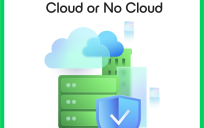Although outdated technology is a problem in itself, modernization will have limited benefit if technology is the primary focus.
Instead, agencies need to think in terms of three tiers: people, process and, yes, technology. Nowhere is this more evident than when agencies migrate applications and data to the cloud.
This was the focus of a recent GovLoop online training, in which government and industry executives discussed how to align modernization efforts with mission priorities. Here are some key takeaways.
Get Workforce Buy-in
People are reluctant to let go of legacy systems that are stable and familiar. “What’s important is earning the confidence of the people you’re supporting — [making the change] in a way that preserves their business,” said David Shive, Chief Information Officer at the U.S. General Services Administration. Start with a few applications and use the success of early projects to demonstrate the value of the transformation.
Sean Phuphanich, Senior Solutions Architect at Amazon Web Services, suggested enlisting teams that have made the shift as a resource for others — a “cloud Community of Excellence,” he said. “When employees see that the new tools make life easier for those who’ve gone before, you get a network effect.”
Partner Tech With Business
Technology modernization isn’t really about the tech, observed said Kevin Cronin, Vice President of Kelyn Technologies. It’s about making things easier for the people who use the system, both internal and external. “We need to work with the business side to find improvements we can make quickly that make things easier for everybody.”
“Technology can’t just be powerful,” said Richard Breakiron, Senior Director of Strategic Initiatives at Commvault. “The user has to be able to use it, and it has to have a business value.” Increasingly, CEOs and COOs are involved in the details of modernization, and managers may have a minor or second degree in a tech field. “Tech is no longer solely the realm of the tech elite,” he said. “It’s now accessible to senior leaders, and accessible from a business standpoint.”
Increase Your Tolerance for Risk
Shive noted that when it comes to trying new things with technology, the risk appetite in government historically has been near zero.
“Create an environment where you do somewhat risky things and say, ‘it’s okay even if the business outcomes are less than optimal — we’ve learned some things that we can apply that in the future,’” Shive said. “That’s easier said than done in the environment we are in, but it’s absolutely the right thing.”
In fact, to do their jobs, leaders need their team members to be comfortable with not getting things right 100% of the time, said Breakiron. And that goes beyond the technology itself.
“It’s a willingness to sit in meetings and say, ‘I don’t think that’s the best way to do it — there’s a better way,’” even at the risk of being wrong, he said. If you insist on zero risk or 100% success, “that’s a tough bar to get over.”
Don’t Expect to Finish the Job
In the same vein, get used to making endless tweaks to your modernization initiatives, improving things bit by bit. “There’s no such thing as done,” Shive said. “If you think you’re done, you are not listening to your users.”
The good news is that cloud has made it easier to take a more iterative approach, said Phuphanich. In the past, when launching a project, an agency had to make a big investment in new infrastructure and then had to live with it. Cloud gives you wiggle room.
“Cloud is a pay-as-you-go model, so it encourages experimentation,” he said. “Maybe you built it too big, so you size it down, or your built it too small, and so size it up…. It’s a much smaller penalty if you don’t get something right.”
Agencies are beginning to get a cloud-mindset, said Cronin. In the early years of cloud, they tended to take a “lift and shift” approach, simply migrating applications to the cloud with little change.
Now they are looking to take a more iterative approach, he said. “They’re saying, let’s take an application and figure out how to take it to the next level — really take advantage of the services that the cloud has to offer.”
This training was sponsored by:






Leave a Reply
You must be logged in to post a comment.